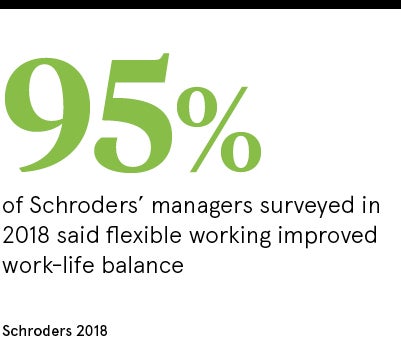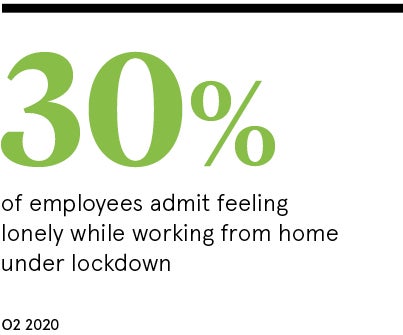Crises always put company cultures to the test. And few are as big as a global pandemic.
Organisations have had to completely re-examine working hours, health and safety protocols, shift patterns, internal communications and cybersecurity policies, to name a few. And to do all of that successfully while maintaining a positive working environment that nurtures employee wellbeing and the bottom line simultaneously is no easy task.
Remote working, whether you were used to it or not, comes with new challenges in the COVID-19 era. But a lot of it boils down to fostering an inclusive corporate culture and the engagement of all stakeholders, staff and leaders alike.
According to research from Bain & Company, organisations that exhibit a winning culture, “that have a strong internarl compass and inspire their employees”, are 3.7 times more likely to be business performance leaders. And if WFH is set to become the ‘new normal’, as many have suggested, businesses need to prioritise culture as a crucial element of their long-term viability.
Schroders: internal communications don’t have to be written
Internal analytics recorded by asset management company Schroders, which has more than 5,000 employees globally, found staff were much more likely to engage with internal communications that were not the written word. 
“We realised our employees were engaging more with voicemails or podcasts,” says Emma Holden, global head of human resources at Schroders, revealing interaction rose sevenfold. “People increasingly prefer to engage with voice rather than text.”
With more than 99.5 per cent of its employees working from home during the coronavirus pandemic, internal communication has become increasingly important and methods have had to be altered accordingly to ensure an inclusive culture.
Each week Schroders chief executive Peter Harrison has been sending a weekly voicemail to all workers, senior staff have been writing personal blogs and through Schroders TV the company has been producing internal videos discussing challenges and advice on issues such as work-life balance and home schooling.
“Modern leadership is very much about being humble and open about personal challenges, so that’s why these initiatives have been so successful,” says Holden. “It’s giving people really tangible examples and also provides quite personal stories that help people connect to the firm and their colleagues.”
She believes the pandemic has further bolstered the company’s support for flexible working. Since 2016, Schroders has had a policy of allowing employees to work from home at least one day a week, thanks to the award-winning, remote working tool made by Citrix known as Schroders S3.
A survey of Schroders’ managers in 2018 found 95 per cent believed flexible working improved work-life balance, 87 per cent said it increased engagement in their team and more than 75 per cent said productivity increased as a result.
Given the nature of the business and need to be in close contact with clients, Holden does not envisage employees working from home full time. But the option of remote working is seen as key in creating an inclusive culture. “We believe it can get the best from people and we will continue to use it,” says Holden.

O2: social activities create an inclusive culture
Loss of informal socialising with colleagues is one of the aspects of remote working that has received less attention, but O2 has found it to be a key factor in fostering an inclusive culture among its 6,700 employees.
Research by the telecommunications network entitled The Flexible Future of Work found 30 per cent of employees admitted to feeling lonely while working from home under lockdown and 26 per cent missed socialising informally with colleagues.

“We’ve all been experimenting with more informal connectivity tools that can replace the between-meeting conversations,” says Katy Liddell, O2 director of business sales and service. “Making sure teams are talking regularly about non-work-related topics and taking the time to ask people how they are is so important while we all work remotely.”
The answer has in part been a focus on social activities such as home cooking groups that share photos of best baking, fundraising scheme The 2.6 Challenge, Strava home running groups to encourage healthy lifestyles and a number of game show-style activities based on the likes of Through the Keyhole and Would I Lie to You?
These activities have been used to supplement an underlying focus on wellbeing, according to Liddell.
O2 recently introduced a company-wide “mystery chat” to address loneliness at work, with the idea that employees can use the tool to speak to someone who they don’t know in the business. It also rolled out Evermind, an app that provides advice and tools on topics such as stress, doubt and loneliness, in time for the lockdown, and published a Happy, Healthy and Productive guide to working from home.
“While it’s difficult to fully gauge what the long-term impact of COVID-19 will be, the demand for flexible working and the role of technology in our working lives are clearly accelerating during lockdown,” says Liddell.
“However, another crucial learning is how to maintain a healthy balance with the digital tech and tools in our homes now, and ensure we can step away from our work and take the time for personal and mental wellbeing.”

Lloyds Bank: prioritising mental health for the remote workforce
For Lloyds Bank, which has 65,000 employees and a revenue of £42 billion, the focus during lockdown has been prioritising employee experience and wellbeing to create an inclusive culture. The FTSE 100 company has seen some 45,000 workers shift to remote working since the pandemic began.
“This requires taking a strategic approach to not only how, when and where our colleagues work to be at their best, but also how they utilise technology effectively,” says Fiona Cannon, group sustainable business director at Lloyds Banking Group. 
A key focus has been colleagues’ mental health and wellbeing during remote working. The company has 800 mental health advocates, who offer one wellbeing activity a week, employees can talk confidentially to a trained specialist 24/7 and nearly 10,000 permanent staff have signed up to the industry-leading wellbeing app Headspace.
An online space known as Your Resilience has been set up to advise colleagues about COVID-19 in the form of articles, animations, podcasts and webinars, with more than 8,000 employees registering so far. A similar scheme called the Optimal Leadership Resilience Programme has been rolled out for senior leaders.
“Our priority is the safety and wellbeing of all our colleagues to ensure they have the technology and training needed to work from home,” says Cannon. “Lloyds Banking Group recognises both the benefits to colleagues and improvements in overall business productivity.”
Close support has been given to the bank’s women’s network Breakthrough, with yoga and meditation sessions provided to help foster an inclusive culture. A virtual choir workshop, launched in conjunction with charity partner Mental Health UK, also draws in up to 500 colleagues each week.
In March, the company used internal forums to survey workers about what they needed to help the transition into their new workspaces and among the measures introduced by Lloyds Bank is the Office@Home programme, which provides technology and training through live webinars. In addition, more than 13,000 pieces of equipment such as computer keyboards, chairs and monitors have been distributed to employees across the UK to date.
Schroders: internal communications don’t have to be written


